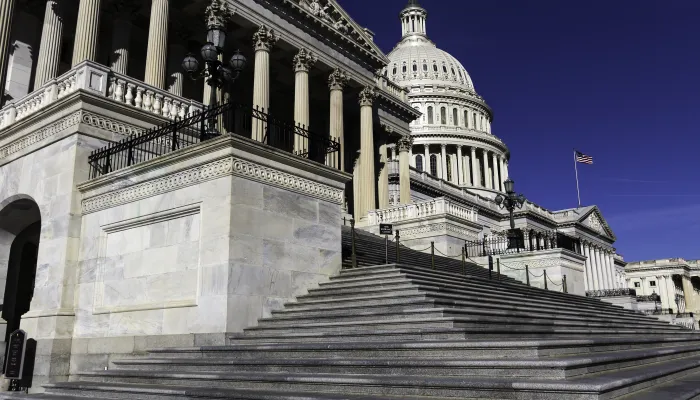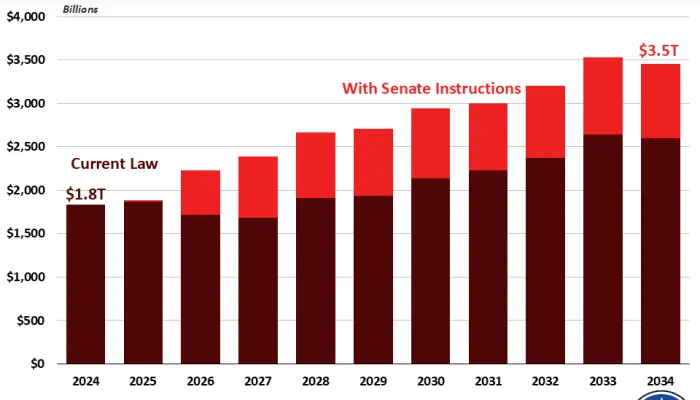Mandatory Spending Continues to Drive Spending Growth
The deficit will rise dramatically over the next decade, from about $560 billion at the end of Fiscal Year (FY) 2017 to over $1.4 trillion at the end of FY 2027, according to the most recent budget and economic outlook by the Congressional Budget Office (CBO). This increase is the result of the $2.6 trillion increase in annual spending exceeding the $1.7 trillion increase in annual revenue.
Over 80 percent of the increase in spending will be due to the rising costs of three areas of the budget: Social Security, major health care programs, and interest on the debt. Specifically, three-tenths of the increase will come from rising Social Security costs, one-fifth from rising Medicare costs, another tenth from rising Medicaid and ACA costs, and one-fifth from the rising cost of net interest.
Meanwhile, defense will make up just 6 percent of nominal spending growth. Non-defense discretionary, a category that includes spending by most federal agencies, only accounts for 4 percent of spending growth. And the entire remainder of the budget – including spending on farm subsidies, federal retirement, food stamps, and unemployment benefits – will only account for 8 percent of the total projected spending increases.
It is mandatory spending – especially spending on retirees – that is driving our spending growth and the rise in our nation's debt.
This trend becomes even more clear when one looks at changes as a share of the economy where health, Social Security, and interest spending equal 143 percent of total spending growth.
Between 2017 and 2027, total spending will rise by 2.7 percent of GDP. Of that, Social Security will grow by 1.1 percent of GDP, health spending will grow by 1.4 percent of GDP, and interest will grow by 1.3 percent of GDP. Combined, those three categories increase by 3.9 percent of GDP.
That means all other spending – defense, infrastructure, food stamps, the government workforce, foreign affairs, and most everything else the government does – will shrink as a share of the economy. Most of this reduction will come from the discretionary budget that Congress appropriates every year, roughly evenly split between defense and non-defense.
As President Trump and the new Congress look for potential spending cuts, they should focus first and foremost on the drivers of our debt. While there are efficiencies to find in the defense and non-defense discretionary budgets, it's important to recognize that discretionary programs only account for 10 percent of the growth in spending and that reductions in discretionary spending has already accounted for most of the enacted savings over the past decade.
The biggest budget challenges lie in rising interest costs and the growth of our entitlement programs, largely driven by the aging of the population. That suggests policymakers should focus on slowing the growth of these programs, funding them better, or some combination.


